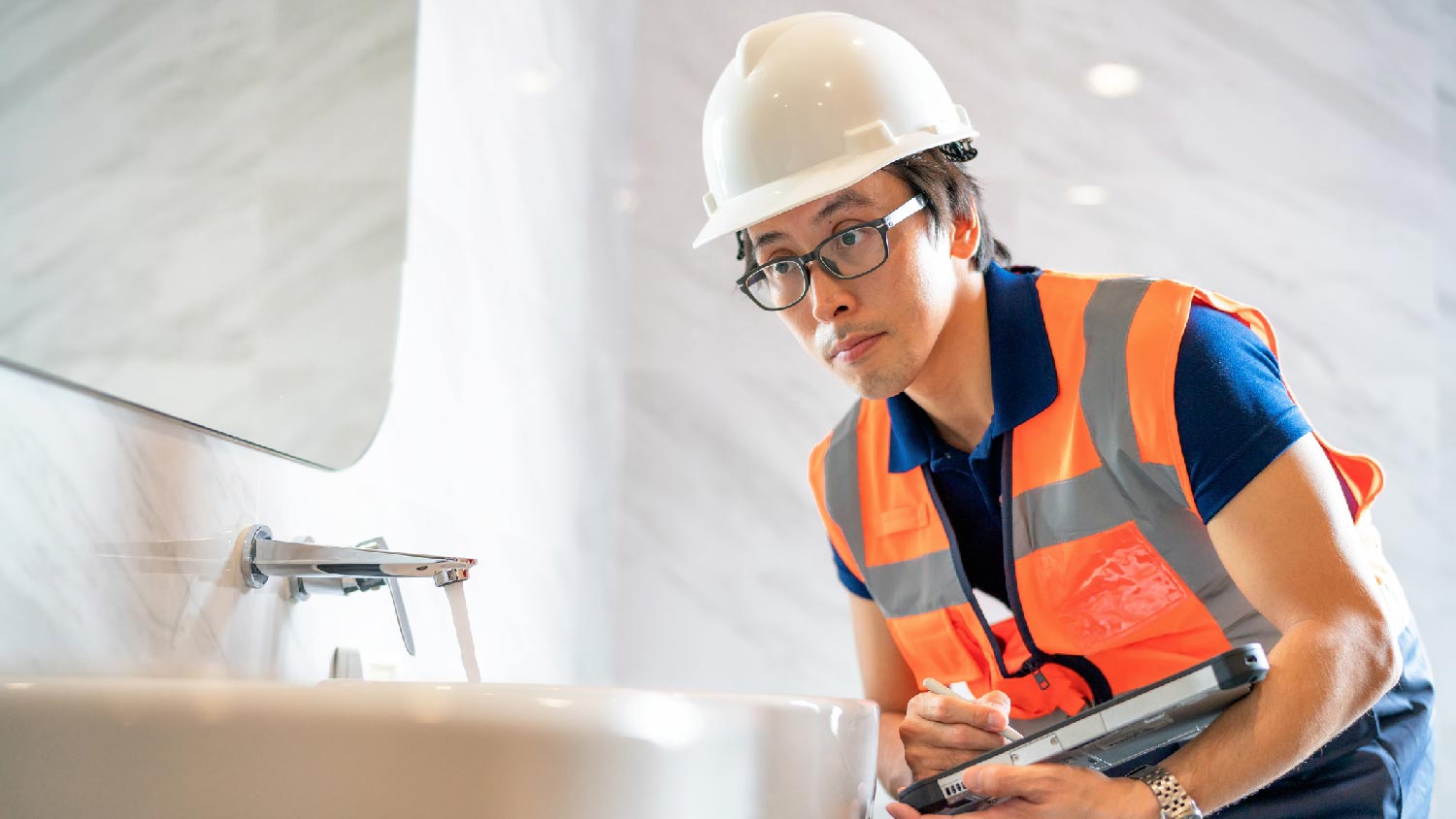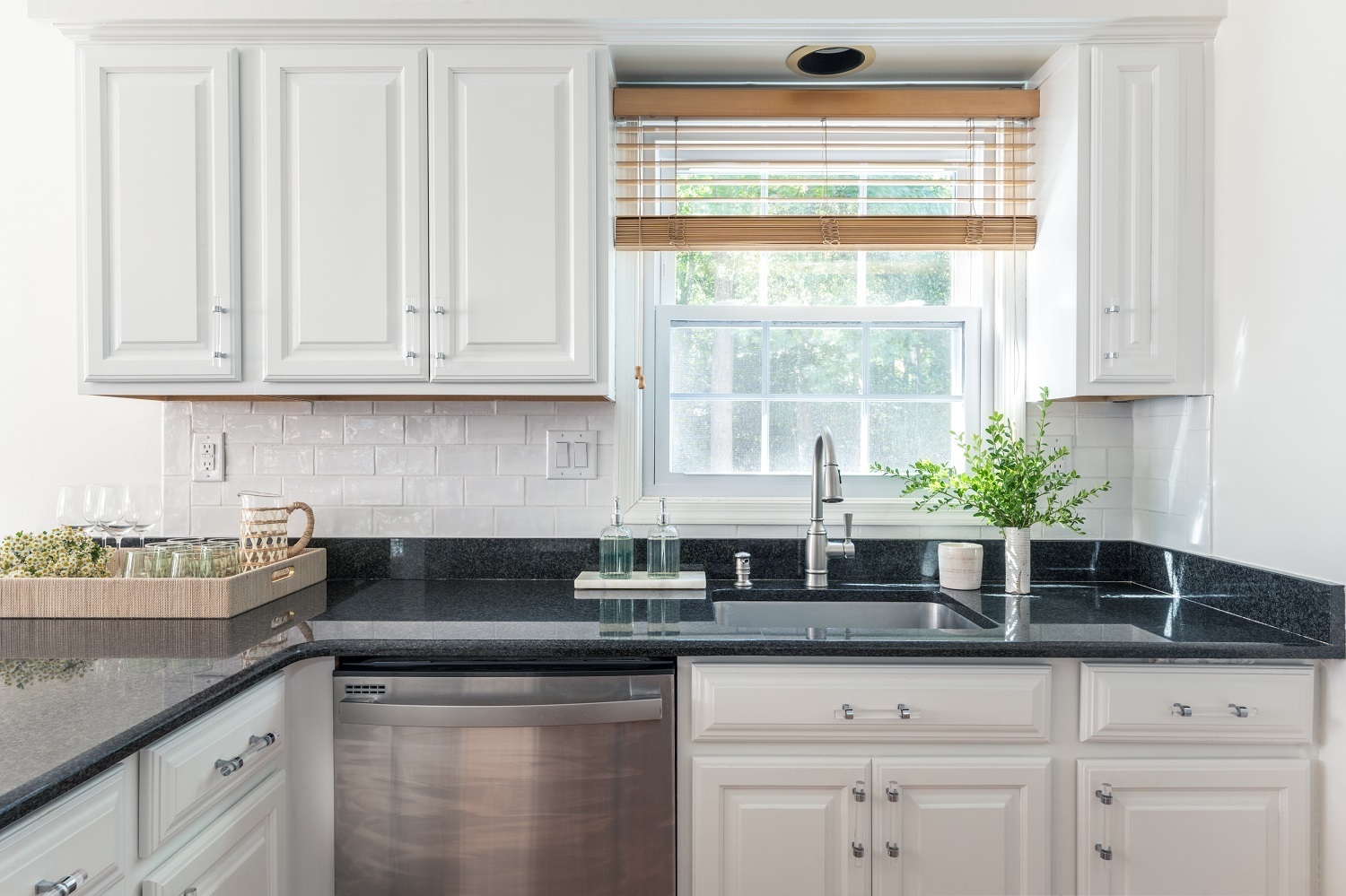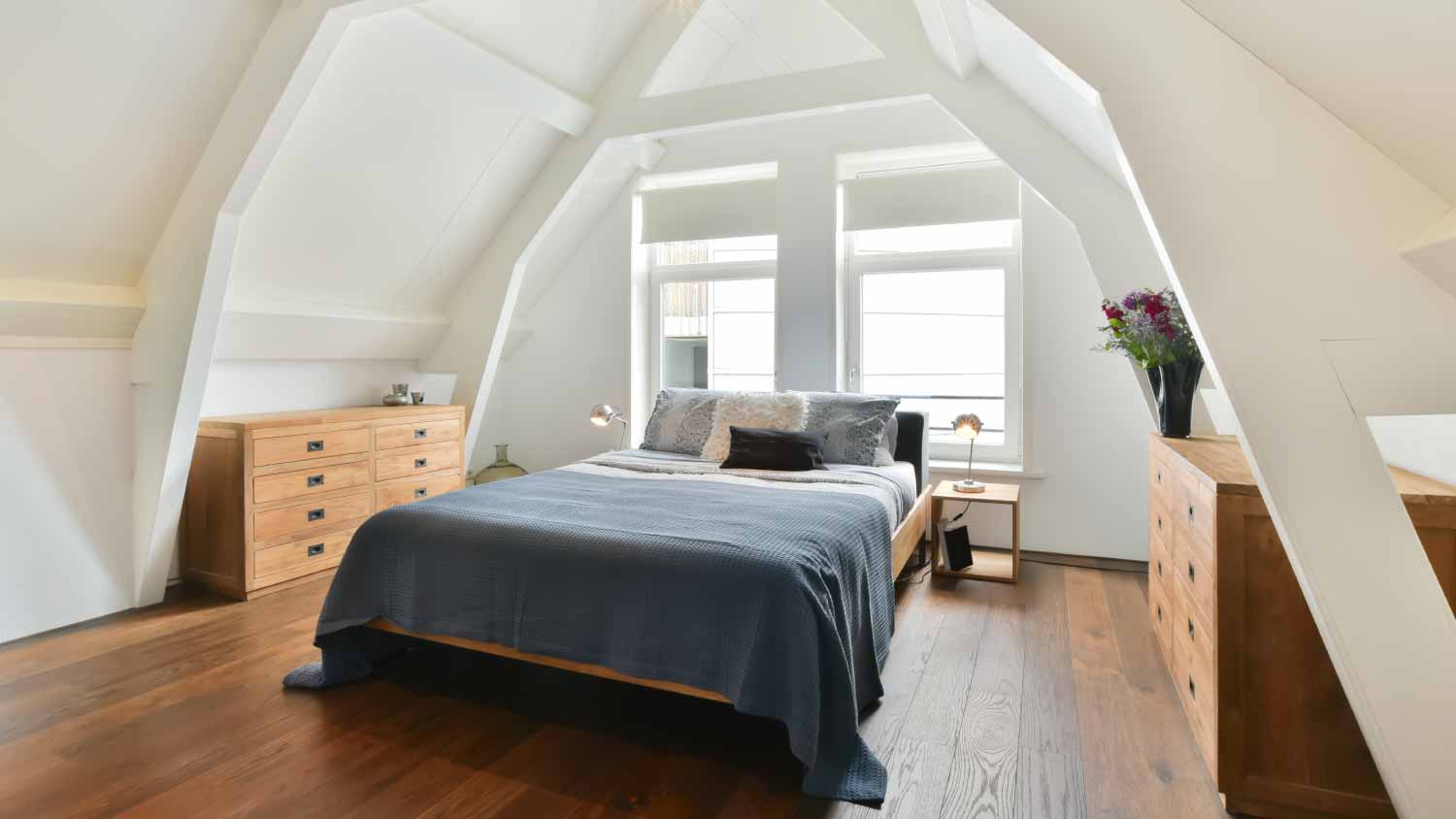Pros and Cons of Wall-Mounted Faucets
Skip the ordinary and go contemporary with wall-mounted faucets


Wall-mounted faucets are visually striking and easy to clean.
These faucets cost more than sink-mounted ones and require complex installation.
Their modern design is a good fit for contemporary bathrooms and kitchens.
It’s easier to install these faucets during construction than to retrofit an existing one.
You have plenty to choose from when it comes to faucets, but there’s arguably nothing more eye-catching than a wall-mounted bathroom faucet. If you’re remodeling your bathroom and can’t decide how to style your sink, consider the pros and cons of wall-mounted faucets. We cover design options, installation, costs, and more so you’ll better understand whether this faucet type is right for you.
What Is a Wall-Mounted Faucet?
A wall-mounted faucet is true to its name. Unlike a traditional faucet that sits on the countertop, this type of bathroom faucet mounts to the wall. The spout and handles come straight out of the wall, making them look like they’re floating. It’s an up-to-date spin on an old-time fixture that can elevate any kitchen or bathroom.
| Pros | Cons |
|---|---|
| Visually pleasing | Difficult installation and maintenance |
| Customizable | Compatibility issues with sinks and countertops |
| Frees up counter space | Cost |
| Ease of cleaning | Limited options |
Pros of Wall-Mounted Faucets

Wall-mounted faucets have a contemporary look that works perfectly in modern spaces. Pair this with sensible advantages like easier cleaning and more counter space, and this is a clear winner for some homes. You can also customize wall-mounted faucets via your choice of sink and the height at which you install the faucets on the wall.
Aesthetically Pleasing
Wall-mounted faucets look contemporary and chic, adding a touch of character to any space. Depending on the rest of the room’s design, a wall faucet could be the focal point of your vanity or a sleek add-on that accentuates the modern vibe.
Customizable
With a wall-mounted faucet, you have many choices for customization, including which sink you want and the height at which you wish to install the faucet. The faucet height requires a bit of calculation to avoid too much splashing, but with the right sink, you can opt for a faucet to accommodate large pots and pans in the kitchen.
Additionally, wall faucets don’t require a backsplash, giving you more freedom for what you’d like to do with the walls. You might go with a traditional tile or a painted wall.
Allow for More Counter Space
Since wall-mounted faucets don’t take up counter space, it’s an excellent idea for smaller bathrooms and kitchens. This creates a streamlined, clean look and expands your choices for different sink shapes and sizes.
Easy Cleaning
We all know what a pain cleaning a traditional faucet is because of all the nooks and crannies. With wall-mounted faucets, that’ll be a thing of the past. You’ll still need to wipe down the spout, handles, and the faucet base, but it’ll be much easier to access. There aren’t any crevices to clean, so you’ll save time. It’s also a more hygienic option.
Cons of Wall-Mounted Faucets

While the above advantages are appealing, there are some drawbacks. The installation process is much more complex than traditional faucets, so plan on hiring a pro who replaces faucets to do the job for you. Plus, you’ll have fewer design options and will have to choose your sink and countertop carefully.
Also, maintaining these faucets is more challenging because the plumbing work is housed behind the wall, and they cost much more to install than traditional faucets.
Difficulty of Installation
These faucets require plumbing lines inside the wall, which isn’t standard. So, the best time to install wall-mounted faucets is when the walls are still open during construction. If you already have a traditional faucet and want to upgrade to a wall-mounted faucet, advanced plumbing work is required.
Besides the plumbing installation in the walls, the job requires precise installation, especially regarding the faucet height. If done poorly, you’ll end up with a sink that splashes too much, leading to a lot of cleanup and potential water damage. So hire a faucet installer near you who knows what they’re doing, and use their advice to find the right sink for your faucet.
Compatibility Issues With Sinks and Countertops
Before buying your sink and faucet combo, ensure they’re compatible. For example, pair your wall-mounted faucet with an under-mount or vessel sink. If you’re working with your current vanity and already have an under-mount sink, it’s probably best to keep it that way. After all, vessel sinks require lower countertop heights.
Keep all three components—faucet, sinks, and countertops—in mind when making purchasing decisions.
Maintenance Level
Since the plumbing for wall-mounted faucets is inside the wall, any potential leaks can go undetected for a long time and leave you susceptible to water and mold damage. Once a leak or other issues are detected, you’re looking at opening the wall, which requires drywall and wall tile repair.
On the other hand, if you need repairs for the unit, such as fixing valves, gaskets, O-rings, and the like, the process is similar to fixing traditional faucets.
Cost
Wall-mounted sink faucets cost between $100 and $400, while a traditional knob faucet costs $30 to $300. Standard wall-mounted fixtures with two handles are on the lower end of the cost range, while more elaborate fixtures cost up to $1,000 or more.
Limited Options
Although many wall-mounted faucets are available for you to choose from, there are fewer design options than traditional faucet types. Besides the material and color, you can choose from single- or double-handle options. There are a few touchless, traditional knob, and joystick options, but you’re limited on what’s available. You might opt for a waterfall faucet, which provides a large, steady stream of water.
Other Faucet Types Available
Here are other traditional faucet types you can choose from in addition to wall-mounted ones:
Centerset Faucet: The faucet, including the spout and two handles, is on a single unit
Widespread Faucet: The spout and handles are not connected and are separate units
Vessel Faucet: Tall spout with an attached single-handle lever
Cross-Handle Faucet: Faucets with handles in an X-shape
Push-Button Faucet: Users turn these on by pressing a button
Bridge Faucet: The spout and handles form a bridge-like shape
Is a Wall-Mounted Faucet Right for You?
A wall-mounted faucet is right for you if it fits or adds to the visual aesthetic of your bathroom or kitchen. These eye-catching fixtures will add a unique element to your home. If your space already has multiple wow factors or focal points, a wall-mounted faucet might make the room too busy. On the other hand, if your design is minimalist and sleek, adding a wall-mounted faucet provides the perfect touch to tie everything together.
In addition to design considerations, consider these faucets' practical advantages and disadvantages. You’ll need wiggle room in your budget for the costly installation, especially if you’re retrofitting your space. These faucets are also harder for kids to reach, so if you have little ones, opt for traditional faucets instead.
Frequently Asked Questions
Wall-mounted faucets aren’t more difficult to fix than traditional ones, but plumbing problems will complicate your repair. If your plumber needs to access the plumbing lines, they’ll have to open up the wall in your bathroom or kitchen. So once they finish fixing the issues, like a leak, you’ll need to pay extra for drywall repairs.
Wall-mounted faucets are installed 6 to 8 inches above the countertop. The height you choose is very significant because the wrong choice will lead to a faucet that splashes water everywhere. Your installer should have a good recommendation based on your sink type, size, and shape. A good installer will ensure the sink is comfortable and splash-free.
A well-installed wall-mounted faucet shouldn’t splash. That’s why it’s worth hiring someone with experience installing wall-mounted faucets. Beyond the installation, you should carefully choose the right faucet and sink combination. If your sink splashes after installation, you can try installing an aerator, which lowers the amount of water coming out of the faucet.





- Bathroom Remodeling
- Kitchen Remodeling
- Shower Installation
- Stair Installers
- Bathtub Installation
- Shower Door Installers
- Kitchen Design
- Bathroom Design Companies
- Storm Shelter Builders
- Pre-Made Cabinets
- Kitchen Refacing
- Bathtub Replacement
- Ceiling Tile Installation
- Suspended Ceiling Companies
- Residential Designers
- Stair Builders
- Remodel Designers
- Shower Enclosures
- Home Renovations
- Kitchen Renovations
- Garage Remodeling
- Grab Bar Installation
- Walk-In Tub Installers
- Tub to Shower Conversion
- Balcony Contractors
- 7 Different Types of Bathroom Faucets
- Bathroom Faucet Sizes: Are They All the Same?
- 14 Types of Kitchen Faucets and How to Choose One
- Get To Know the Parts of a Sink Faucet
- How to Replace Your Kitchen Faucet: A Complete DIY Guide
- How Long Do Bathroom Faucets Last?
- What Is a Smart Kitchen Faucet and How Does It Work?
- When to Drip Faucets in the Winter to Prevent Burst Pipes
- Should I Drip or Cover My Outdoor Faucets During the Winter?
- 10 Most Common Plumbing Problems Every Homeowner Should Know










